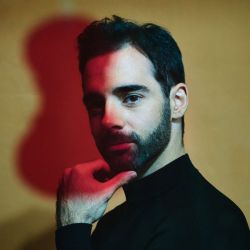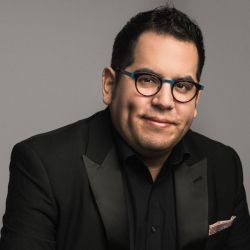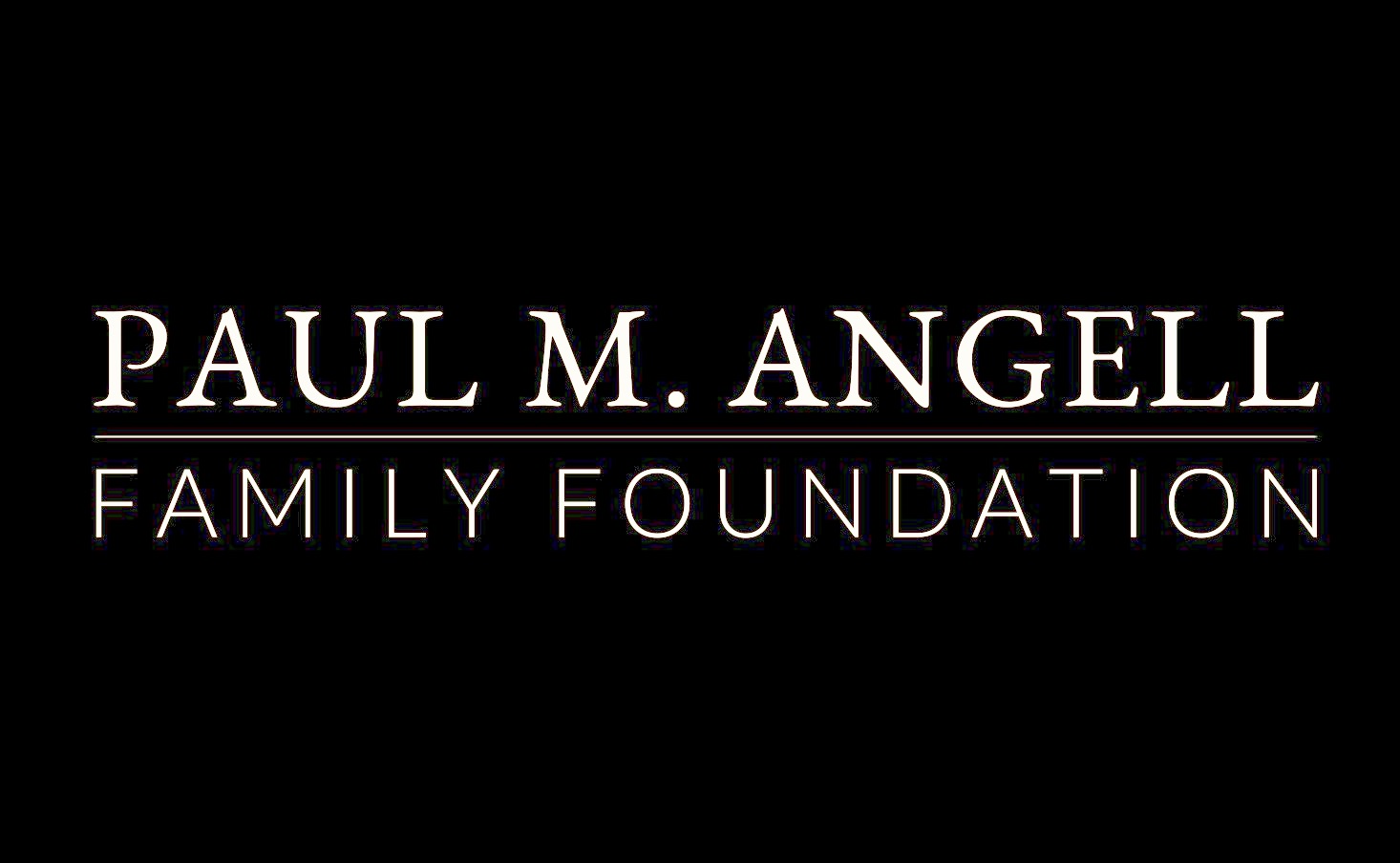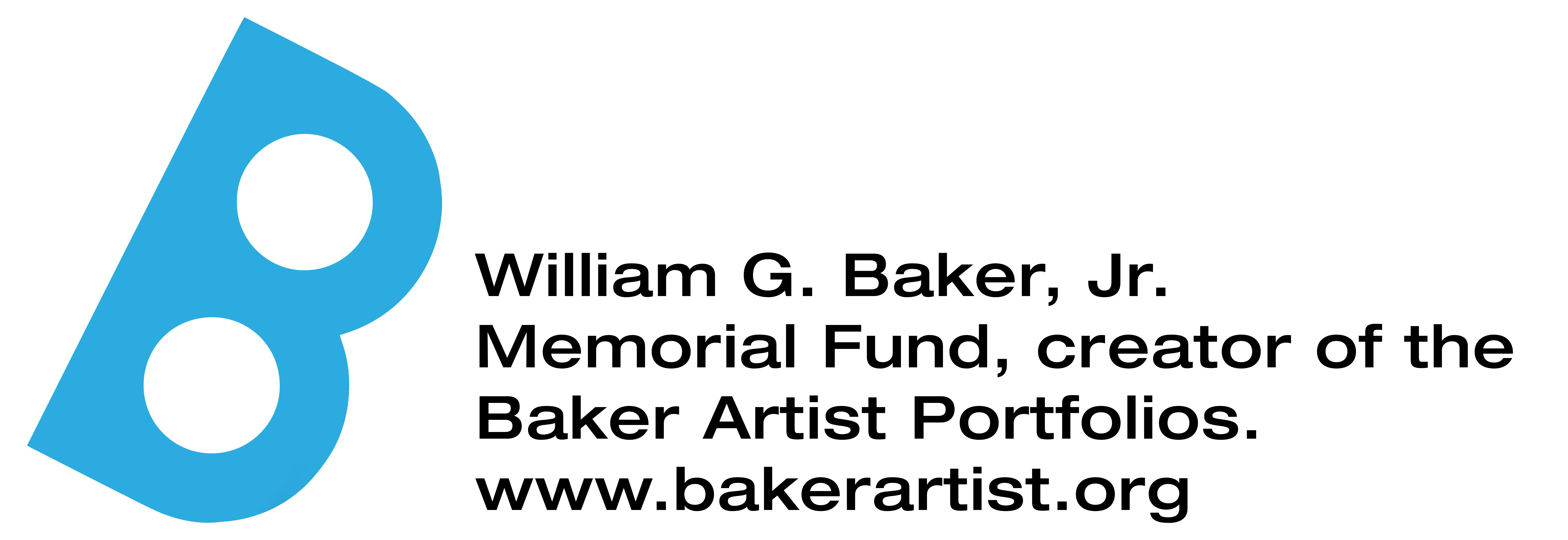Pablo Ferrández, cello (Baltimore Recital Debut)
Julio Elizalde, piano
The Piatigorsky Memorial Concert
Location: Shriver Hall
Spanish cellist Pablo Ferrández, one of music’s fastest rising stars, hailed for his “superb technique and exhilarating musicality” (Los Angeles Times), is joined by pianist Julio Elizalde, an artist of “compelling artistry and power” (Seattle Times). Expressive pieces inspired by the voice complement cello sonatas by Beethoven and Brahms: two major works with distinct styles yet a shared boldness and breadth of emotion.
Ferrández is "a new cello genius." –Le Figaro
"The elegant Mr. Elizalde… had a chance to show off his virtuosity." –New York Times
This concert was originally scheduled for January 12, 2025 and has been changed to January 19, 2025.
What You'll Hear
About the sponsor
The Gregor Piatigorsky Memorial Concert was established in 1978 by Dr. and Mrs. Daniel Drachman and Dr. and Mrs. Joram Piatigorsky. The concerts present a mix of internationally renowned cellists as well as those with promising solo careers. Gregor Piatigorsky dedicated a large part of his life to teaching and encouraging talented young musicians. His heart's desire was to open the way to successful careers for them. Piatigorsky exemplified extraordinary virtuosity as well as high musical and personal ideals. It is the endowers' intention that cellists who possess likeminded goals and accomplishments will be given an opportunity to perform through these concerts.

Pablo Ferrández
Prizewinner at the XV International Tchaikovsky Competition and a Sony Classical exclusive artist, Pablo Ferrández is hailed as a “new cello genius” (Le Figaro). A captivating performer, “Ferrández has the lot: technique, mettle, spirit, authority as a soloist, expressivity and charm” (El País). Introduced by the Pittsburgh Symphony as “the next Yo-Yo Ma,” Pablo Ferrández has turned into a cello phenomenon and one of the most in-demand instrumentalists of his generation.
His debut album under Sony Classical, “Reflections,” released in 2021, was highly acclaimed by critics and praised with the Opus Klassik Award. In Fall 2022 Pablo Ferrández released his second album, which included Johannes Brahms’s Double Concerto, performed with violinist Anne-Sophie Mutter and the Czech Philharmonic under Manfred Honeck, as well as Clara Schumann’s Piano Trio, performed with Mutter and pianist Lambert Orkis; this, too, received rave reviews.
Ferrández’s recent seasons have seen him appearing with the Boston Symphony, Cleveland Orchestra, Los Angeles Philharmonic, San Francisco Symphony, Pittsburgh Symphony, Filarmonica della Scala, L’Orchestra dell’Accademia Nazionale di Santa Cecilia, Tonhalle-Orchester Zürich, Bayerischen Rundfunk Symphony Orchestra, Munich Philharmonic, Frankfurt Radio Symphony, Konzerthausorchester Berlin, NDR Elbphilharmonie Orchestra, Rotterdam Philharmonic, Royal Philharmonic Orchestra, Orchestre National de France, Israel Philharmonic, Oslo Philharmonic and Seoul Philharmonic. He has also toured with the London Philharmonic, Academy of St. Martin in the Fields, Antwerp Symphony, and the Czech Philharmonic under Semyon Bychkov. Ferrández is frequently invited to renowned international festivals such as Verbier, Salzburg, Dresden, Sion, Tsinandali, Abu Dhabi, and Dvořák Prague Festival, among others.
The 2024-25 season brings Ferrández back to the Munich Philharmonic, Bamberg Symphony, Orchestra Sinfonica Nazionale della RAI, London Philharmonic, Orquesta Nacional de España, KBS Symphony, and Orchestre Philharmonique de Monte-Carlo, where he will play the Brahms Double Concerto alongside Anne-Sophie Mutter and Kazuki Yamada. He debuts with NDR Radiophilharmonie, Belgian National Orchestra, Bergen Philharmonic, Swedish Chamber Orchestra, and North Carolina Symphony, and will be artist-in-residence at the Tongyeong International Music Festival in South Korea. Additionally, Ferrández tours with the Royal Liverpool Philharmonic and Borusan Istanbul Philharmonic, and with the WDR Sinfonieorchester Köln under Andrés Orozco-Estrada in Spain.
Ferrández appears in trio alongside Anne-Sofie Mutter and pianist Martha Argerich at Hamburg Elbphilharmonie, with Mutter and pianist Yefim Bronfman on tour in the United States, with violinist Janine Jansen and pianist Denis Kozhukhin at Vienna Musikverein and Kamermuziek Festival Utrecht, and as recitalist in New York, Baltimore, Milan, Florence, Bilbao, Laufen, and Münster, as well in the Aix-en-Provence, Sion, Peralada, Verbier, and Abu Dhabi festivals.
Born in Madrid in 1991 to a family of musicians, Ferrández joined the prestigious Escuela Superior de Música Reina Sofía when he was 13 to study with Natalia Shakhovskaya. After that he completed his studies at the Kronberg Academy with Frans Helmerson and became scholar of the Anne-Sophie Mutter Foundation.
Pablo Ferrández plays the Stradivarius “Archinto” 1689, on a generous lifelong loan from a member of the Stretton Society. His website is pabloferrandez.com
“Pop-idol magnetism, superb technique and exhilarating musicality reveal a sure star in the making.” – Los Angeles Times

Julio Elizalde
Praised as a musician of “compelling artistry and power” by The Seattle Times, the gifted Hispanic American pianist Julio Elizalde is a multifaceted artist who enjoys a unique career as soloist, collaborator, curator, and educator. Elizalde has performed at many of the world’s major music centers including Walt Disney Concert Hall (Los Angeles), Davies Symphony Hall (San Francisco), Koerner Hall (Toronto), Alice Tully Hall (New York), Kioi Hall (Tokyo), Tokyo Opera City Concert Hall, Seoul Arts Center, Teatro Colón (Buenos Aires), St. Paul’s Knightsbridge (London), National Centre for the Performing Arts (Beijing), Shanghai Oriental Arts Center, Palacio de Bellas Artes (Mexico City), National Concert Hall (Taipei), and the Esplanade Concert Hall (Singapore), among many others.
For nearly a decade, he has appeared as recital partner to world-renowned violinists Ray Chen and Sarah Chang, and has collaborated with many of the leading artists of our time, including Pablo Ferrández, Kian Soltani, Pamela Frank, Robert McDonald, and members of the Juilliard, Cleveland, Takács, Kronos, Brentano, St. Lawrence, and Dover string quartets. As a founding member of the N-E-W Trio, he won the grand prize at the Fischoff National Chamber Music Competition and received the Harvard Musical Association’s prestigious Arthur W. Foote Prize. As part of the Trio, he performed for notable American politicians including President Bill Clinton and Secretaries of State Condoleezza Rice and Henry Kissinger.
A champion of new music, Elizalde has collaborated with celebrated composers such as Osvaldo Golijov, Sir Stephen Hough, Adolphus Hailstork, and Michael Stephen Brown. Elizalde was a featured artist on the soundtrack composed by Academy Award winner Howard Shore for the film Jimmy P: Psychotherapy of a Plains Indian starring Benicio del Toro.
Originally from the San Francisco Bay Area, Julio Elizalde is a graduate of the San Francisco Conservatory of Music, where he earned a bachelor’s degree with honors as a student of Paul Hersh. He holds Master of Music and Doctor of Musical Arts degrees from The Juilliard School in New York City, where he studied with Jerome Lowenthal, Joseph Kalichstein, and Robert McDonald. Since 2014, he has served as artistic director of the Olympic Music Festival outside Seattle, WA, and he is currently the Associate Chair of Strings and Piano Chamber Music at the San Francisco Conservatory of Music.
Julio Elizalde’s website is juliothepianist.com
A musician of "compelling artistry and power" –Seattle Times
Max Bruch (1838-1920)
Kol Nidrei, Op. 47
View NotesMax Bruch is best known today for two concert-hall staples dating from early in his long career: the Violin Concerto in G minor of 1868, dedicated to the Hungarianvirtuoso Joseph Joachim, and Kol nidrei, written in 1880 for the eminent German cellist Robert Hausmann. (In 1887, Joachim and Hausmann would premiere Johannes Brahms’s great Double Concerto, a work that Bruch emulated in his 1911 Double Concerto for Clarinet and Viola.) The composer and cellist had recently struck up a friendship in Berlin, where Bruch conducted a choir that included singers from the city’s thriving Jewish community. One of these singers—or possibly the celebrated cantor Abraham Jacob Lichtenstein, whom Bruch had known since his student days—apparently introduced him to the two Jewish-theme tunes that he incorporated into his piece for solo cello and orchestra. Bruch took pains to emphasize that Kol nidrei was not a purely original work, insisting that the score be subtitled “Adagio on Hebrew Melodies.”
“Both melodies are first-class,” the composer explained to a friend. The opening prayer of Yom Kippur, “Kol nidrei” is chanted in the synagogue to a mournful tune that is repeated three times with mounting intensity. In Bruch’s version, the cello’s rhapsodic cantillation becomes increasingly impassioned and virtuosic; then a cadenza-like passage introduces the rapturous D-major theme, based on a setting of a text by Lord Byron from his collection of 30 poems Hebrew Melodies by the Australian composer Isaac Nathan. A Protestant himself, Bruch said that “as an artist I felt the extraordinary beauty of these melodies very deeply and have therefore been happy to disseminate them through my arrangements.”
© Harry Haskell, 2024
Ludwig van Beethoven (1770-1827)
Sonata No. 3 for Cello and Piano in A major, Op. 69
View NotesTo listeners steeped in the genial Classicism of Wolfgang Amadeus Mozart and Franz Joseph Haydn, the muscular Romanticism of Beethoven’s so-called middle period seemed a strange and wondrously allusive language, almost, indeed, the “air of another planet” that bewildered audiences encountered a century later in the work of another musical revolutionary, Arnold Schoenberg. In an essay published in 1813, critic and novelist E.T.A. Hoffmann described Beethoven’s instrumental music in quasi-mystical terms: “Strange forms begin a joyous dance, as they gently fade toward a luminous point, then separate from each other flashing and sparkling, and hunt and pursue each other in myriad groupings. In the midst of the spirit kingdom thus revealed, the enraptured soul listens to the unknown language, and understands all the most secret allusions by which it has been aroused.”
Beethoven’s five sonatas for cello and piano span the two decades in which he evolved from a young tyro to a mature master. The two Op. 5 Sonatas, written in 1796 for the French virtuoso Jean Louis Duport, are notable for their exuberant but understated brilliance. The two Op. 102 Sonatas of 1815 stand on the threshold between the “heroic” style of his middle period and the more introspective, complex language of his later works. The Op. 69 Sonata, composed in 1807 and 1808, falls squarely in the middle of this period of dynamic stylistic development. Roughly contemporary with such works as the “Pastoral” Symphony, the Violin Concerto, and the two Op. 70 Piano Trios, it shows the composer testing the limits of both cello technique and the duo sonata form. Although Beethoven had already composed nine of his 10 violin-piano sonatas, the relatively novel combination of cello and piano posed new challenges of ensemble and balance.
Only one of Beethoven’s five cello sonatas features a full-scale slow movement, suggesting that he had reservations about the cello’s ability to hold its own alongside the piano as a lyrical solo instrument. Indeed, the autograph score of the A-major Sonata shows that he was still experimenting with various ways of allocating thematic material between the two instruments. In this case, his solution to the problem was to exploit the full range of the cello’s sonority. The Allegro ma non tanto opens with a richly baritonal cello solo, but quickly climbs high as the music picks up momentum. Similar contrasts of register and tempo are explored in the sparkling A-minor Scherzo, with its halting, syncopated theme bandied back and forth between the two players. A meltingly beautiful but oddly truncated Adagio cantabile serves as a preamble to the finale, in which the piano and cello share equally in the bravura figuration.
© Harry Haskell, 2024
Sergey Rachmaninoff (1873-1943)
Vocalise, Op. 34, No. 14
View NotesThe Vocalise occupies a special place among the dozens of songs Rachmaninoff wrote before he emigrated from Russia in 1917. While most of the other Op. 34 songs feature lyrics by Russian Romantic poets, the Vocalise harks back to the 19th-century tradition of songs without words. One of the composer’s most popular creations, it has been transcribed for almost every conceivable vocal and instrumental combination. Rachmaninoff dedicated his miniature masterpiece to Antonina Nezhdanova, the soprano who created the title role in his opera Francesca da Rimini in 1906.
Consciously or not, Rachmaninoff chose the key of his ever-popular piano Prelude in C-sharp minor for this bewitching essay in wordless vocalism. That, at any rate, is where the Vocalise begins and ends. In between, Rachmaninoff explores many a chromatic byway as the sinuous melody ebbs and flows above a persistently throbbing accompaniment. In the second section of the piece, the music rises to an impassioned climax before subsiding in a tender coda. This is melody distilled to its essence; words would indeed be superfluous.
© Harry Haskell, 2024
Johannes Brahms (1833-1897)
Sonata for Cello and Piano in E minor, Op. 38
View NotesThe first of Brahms’s published duo sonatas, the Cello Sonata in E minor dates from the early 1860s. It was a period of upheaval in the composer’s life. Disappointed in his hope of winning a major conducting post in his native Hamburg, he decided to try his luck in Vienna. But it was also a time of growing recognition. In the spring of 1862, the critic Adolf Schubring hailed the 29-year-old Brahms as a worthy successor to Johann Sebastian Bach, Ludwig van Beethoven, and Franz Schubert. In Vienna, Brahms told Schubring, he revered “the sacred memory of the great musicians of whose lives and work we are daily reminded. In the case of Schubert especially, one has the impression of his still being alive. Again and again one comes across new works, the existence of which was unknown and which are so untouched that one can scrape the very writing-sand off them.”
In highlighting the cello’s lower register, the E-minor Sonata evokes the burnished, baritonal sound world of Schubert’s great String Quintet in C major (scored for two cellos). Fittingly, the Sonata is dedicated to Joseph Gänsbacher, an Austrian voice teacher and cellist who was coeditor of Schubert’s collected works. In the summer of 1862, when he wrote the first two movements of the Sonata, Brahms was working on his own double-cello quintet (destined to be reincarnated as the Piano Quintet in F minor). Both works display the combination of lyricism and drama to which Schubring alluded when he wrote that Brahms “understands how to be Classic and Romantic, ideal and real—and after all, I believe he is appointed to blend both these eternal oppositions in art.”
The E-minor Sonata is cast in three movements, all in quick tempos, rather than the customary four. (Brahms composed a slow movement in 1862 but set it aside on the advice of friends; two decades later he recycled it in his Cello Sonata No. 2 in F major.) The opening Allegro non troppo is built around a warmly urgent eight-bar theme that surges from the depths of the cello’s C string against a simple, off-beat accompaniment. The piano part, spare-textured and unassertive at first, soars to a massive climax as the cello’s music becomes increasingly animated. But classical restraint soon reasserts itself, and the movement’s feverish energy subsides in a luminous E-major coda.
The Allegretto quasi minuetto is an oasis of calm between the turbulence of the outer movements. The piano and cello dance a delicate triple-time minuet, circling around each other in playful canonic imitation; its classical poise contrasts with the flowing romantic lines of the middle Trio section. Brahms, a diligent student of Baroque counterpoint, appended the driving, fugal-style Allegro to the first two movements in 1865. The subject announces itself with a dramatic downward leap of an octave, then scurries along in a typically Brahmsian blend of duple and triple meters. The Più presto coda propels the work to a restless finish.
© Harry Haskell, 2024




